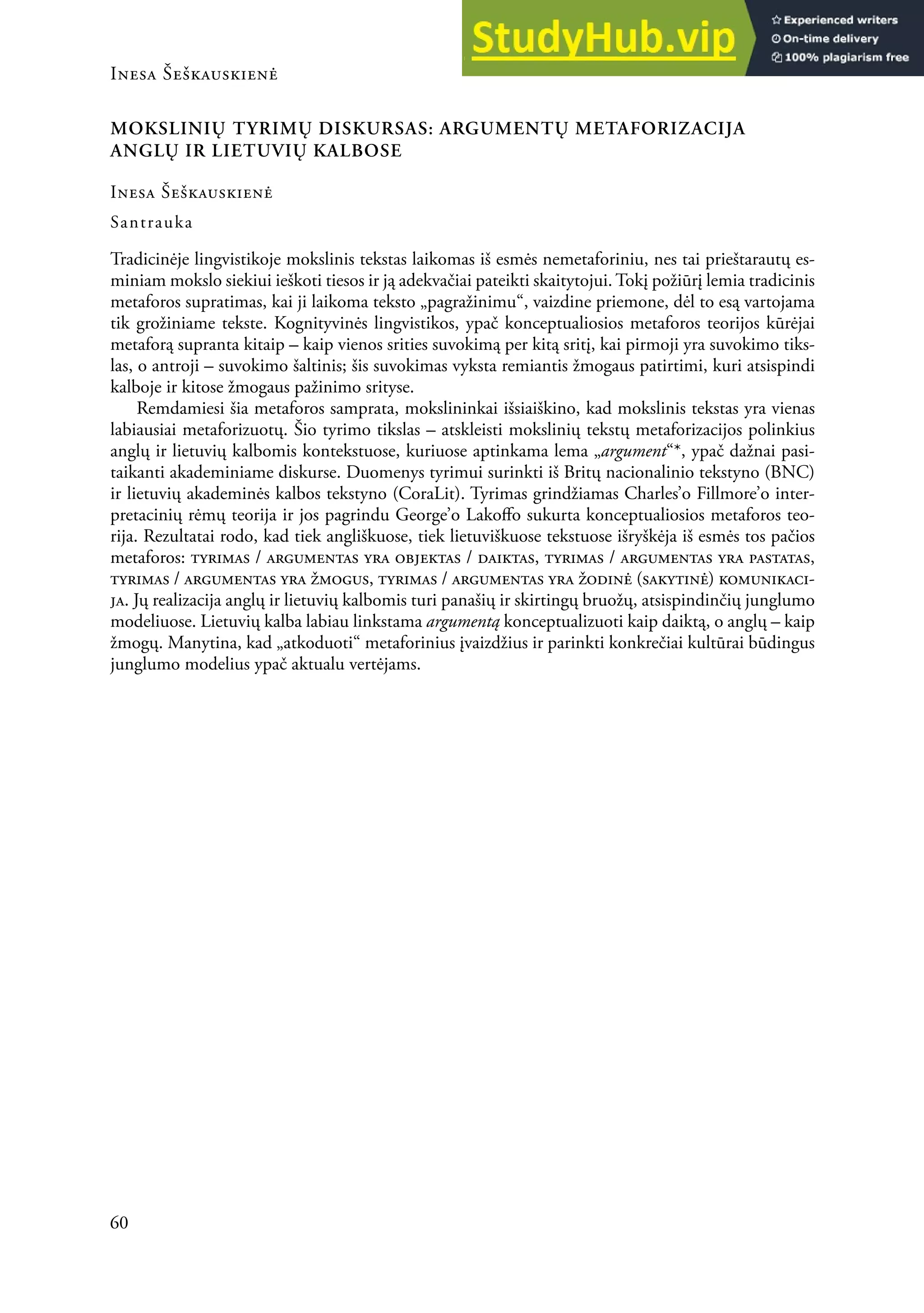This document discusses metaphor usage in academic discourse, specifically focusing on the word "argument". It begins by reviewing previous research on conceptual metaphor theory and how it applies to academic writing. The document then describes the data and methodology used, which is an analysis of contexts using "argument" in the British National Corpus (English) and Corpus of Academic Lithuanian. The results found that both languages use metaphors conceptualizing an argument as an object, structure, person, or verbal communication. However, English tended to portray arguments as more "embodied" while Lithuanian portrayed them more as objects. The metaphors found were consistent with other conceptualizations of research identified in prior studies.

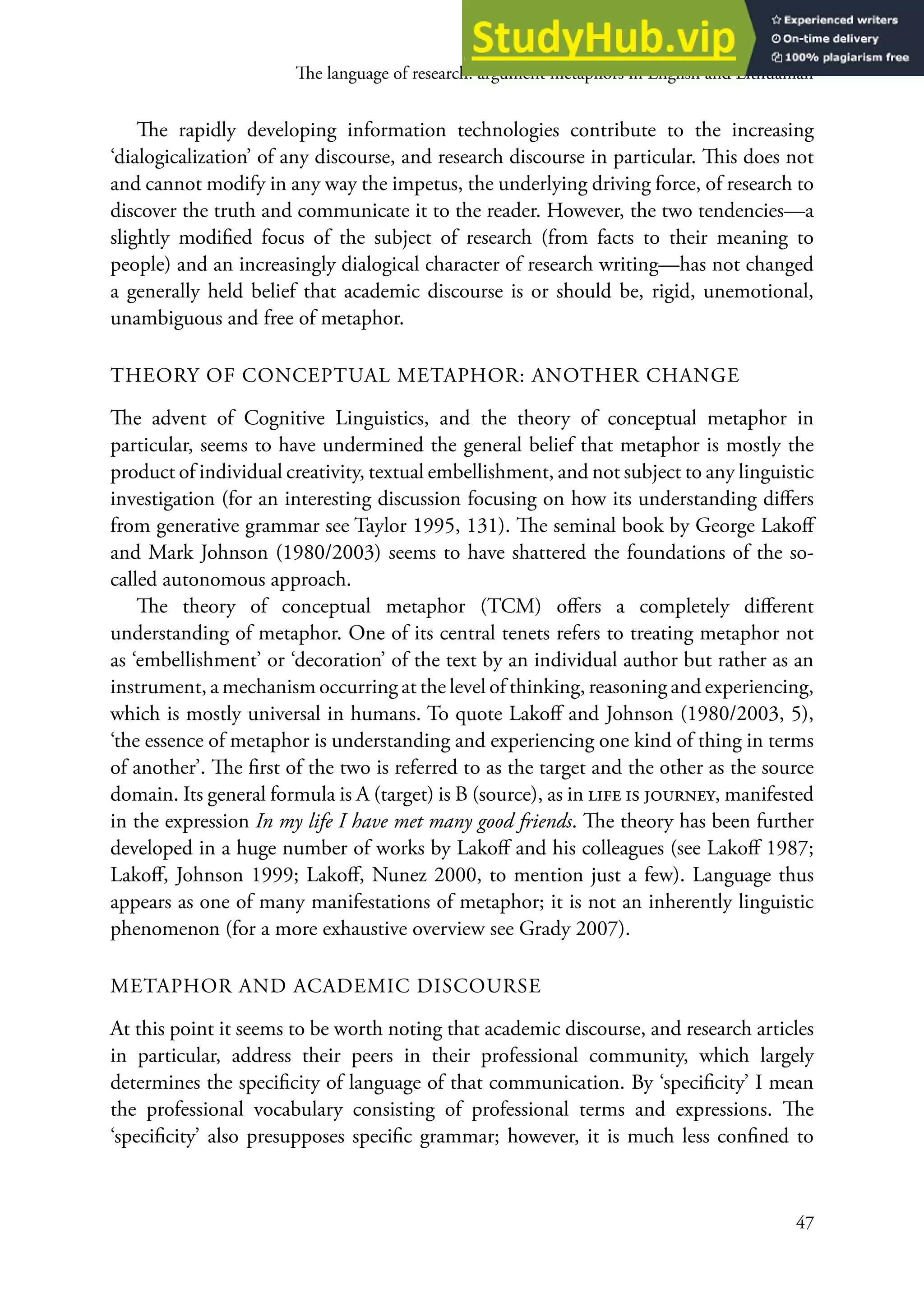
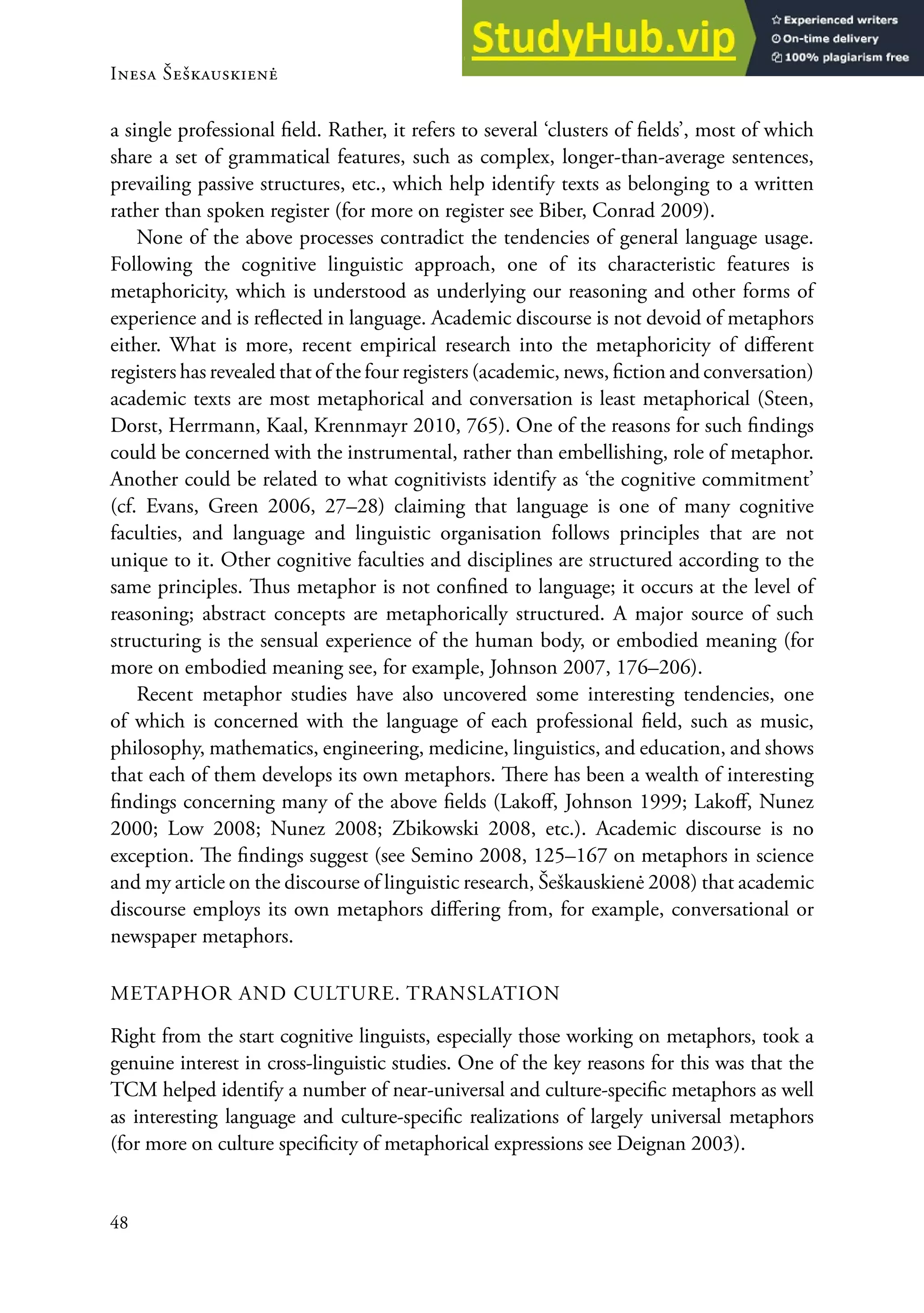


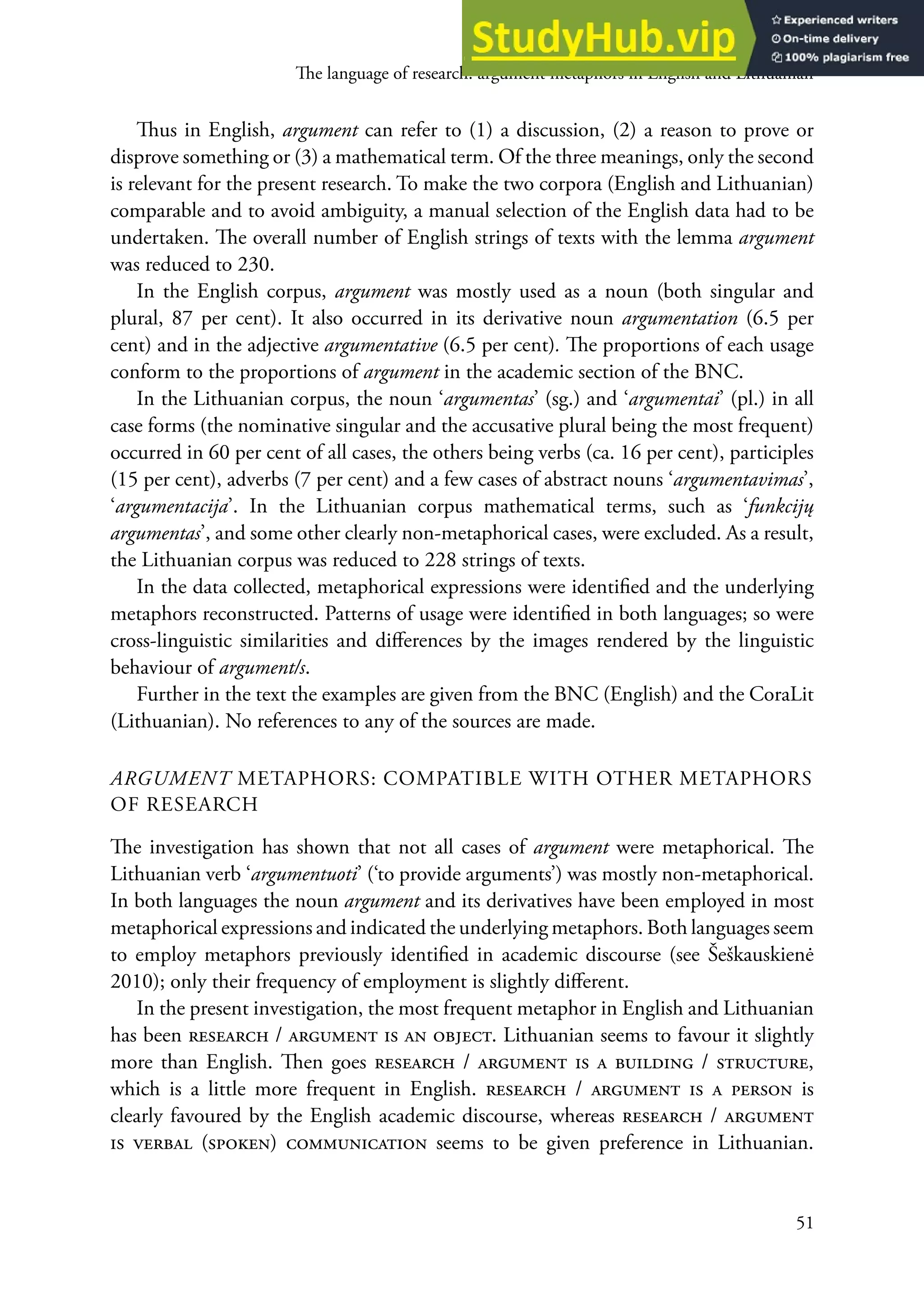
![Inesa Šeškauskienė
52
other, rather occasional, metaphors include research / argument is a journey,
research / argument is performance and some others. Further in the article each
metaphor is going to be discussed; overlapping and language-speciic features of their
realisation are going to be identiied.
ReseaRch / aRgument is an object
his metaphor is compatible with what Michael reddy (discussed in Grady 1998)
and later Joe Grady called ‘conduit metaphor’ (Grady 1998); applying the cognitive
linguistic formula A is B, the conduit metaphor refers to ideas are objects. In the data
of the present research, the metaphor is frequent in english and Lithuanian, although
it is slightly more numerously represented in the Lithuanian data. objects are seen as
items that humans use in their everyday life. hus in Lithuanian, arguments can have
physical properties like weight and breadth; they can be perceived either as individual or
a mass of scattered items, they can be put or provided (but not given or taken, for some
reason), and they can also be used. Arguments can also have dimensions; therefore,
they can be expanded, or put in a sequence. hese features have been identiied in the
combinability patterns of arguments, cf.:
(1) (...) liepos 1 dienos nutarimo motyvuojamosios dalies argumentų pobūdis ir jų loginė
seka nusipelno ypatingo dėmesio.
(‘the nature of arguments of the motivation of the court judgement of July 1t. and
their logical sequence deserve special attention.’)
(2) (…) reikia rasti svarių argumentų.
(‘[one] needs to ind weighty arguments.’)
(3) (...) autorė nuolat siekia pateikti solidžių argumentų.
(‘the author always seeks to give / provide solid arguments.’)
Interestingly, the last combinability pattern seems to be very productive in
Lithuanian. he verb ‘(pa)teikti’ (32 hits in the corpus) is a formal version of the more
neutral ‘duoti’ (‘give’) and is mostly used in contexts referring to abstract notions, such
as arguments or ideas. he primary meaning of giving in ‘teikti’ seems to have bleached
out (cf. another case of semantic bleaching: ‘teikti medicinos pagalbą’—‘to provide
medical help’).
In english, arguments have weight, are often thought of as solid objects, can be put,
given, deployed, brought, removed, made. hey can also be put in a sequence, often in
a line, put forward, be close to something, etc. For example:
(5) (...) although they are of great interest, they are also inevitably weak points in your
argumentation.](https://image.slidesharecdn.com/2011-thelanguageofresearchargumentmetaphorsinenglishandlithuanian-230806181543-e461b2b2/75/2011-The-Language-Of-Research-Argument-Metaphors-In-English-And-Lithuanian-Vertimo-Studijos-Translation-Studies-4-46-60-7-2048.jpg)
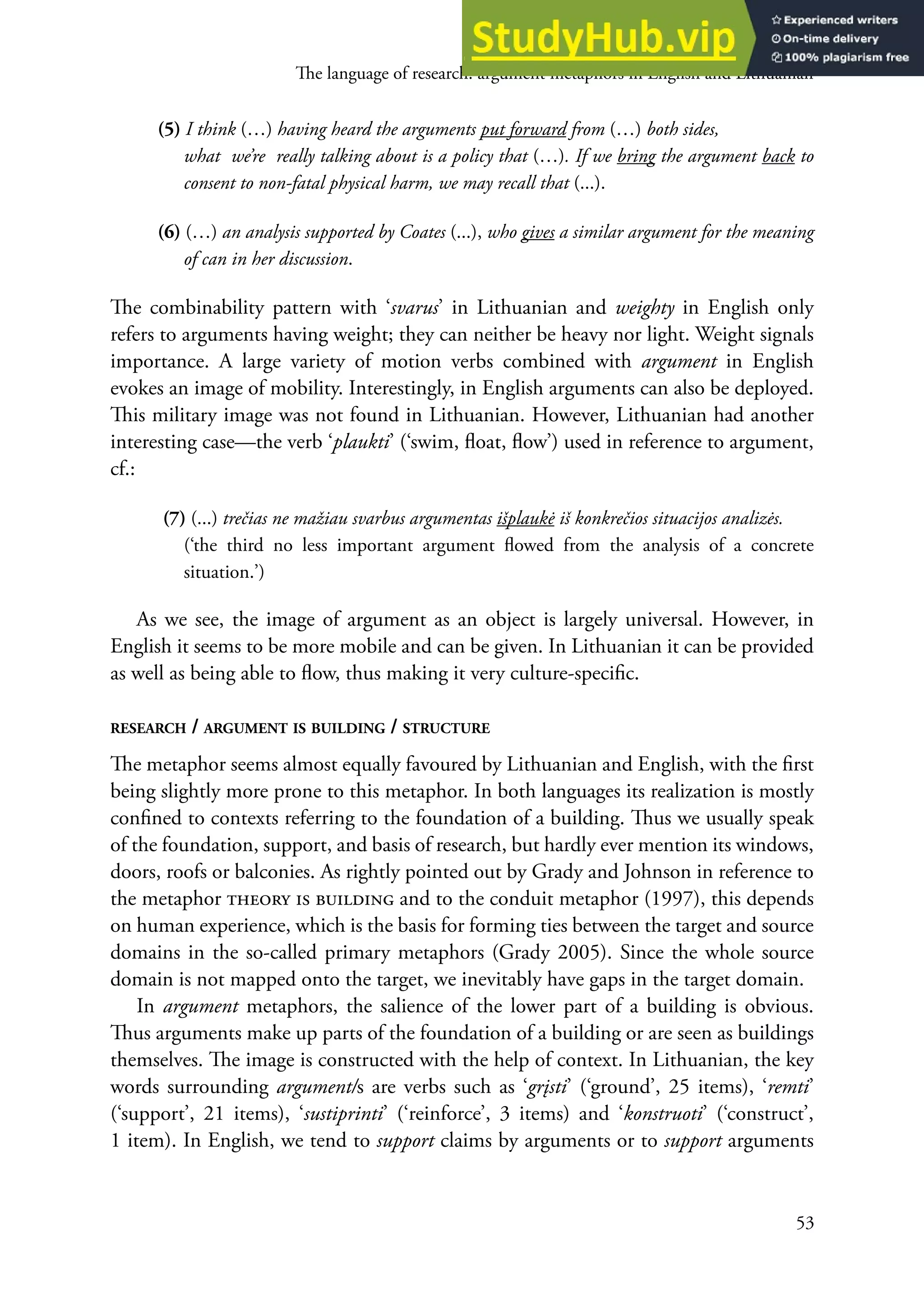
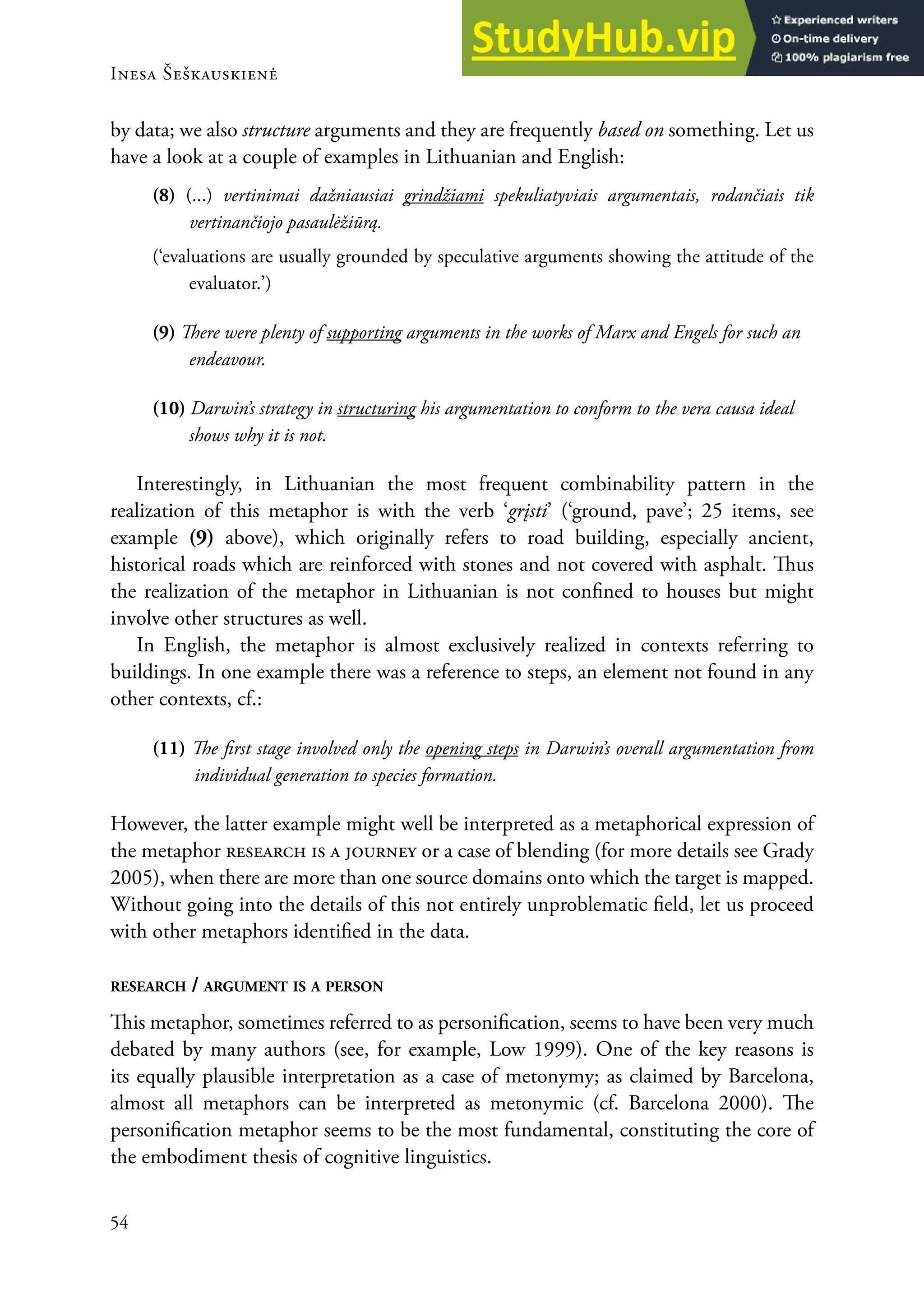

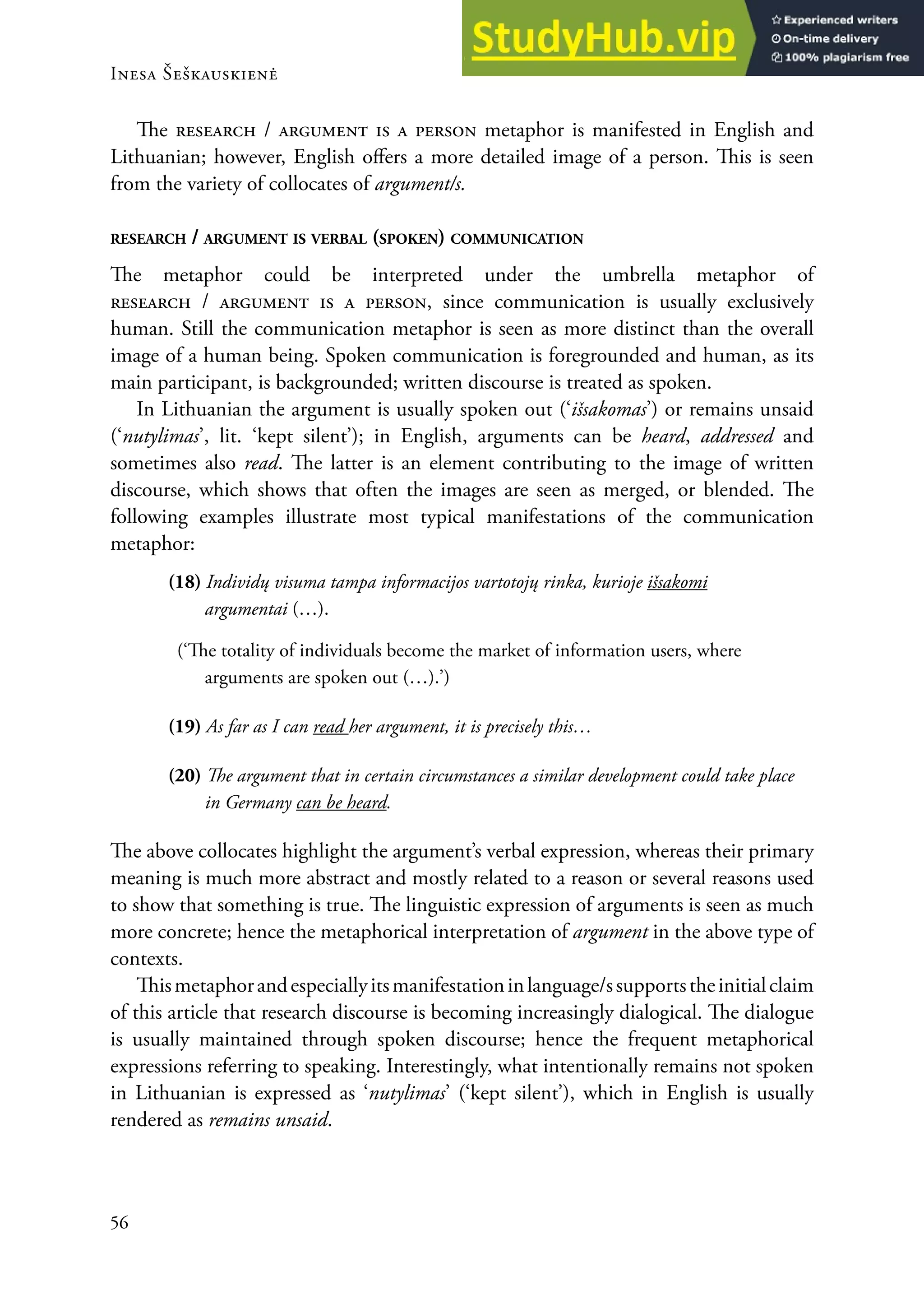

![Inesa Šeškauskienė
58
verbal (spoken) communication is relevant for both english and Lithuanian, since
arguments can be spoken out or heard. Interestingly, in Lithuanian they can also be
kept unsaid (‘nutylėti’—‘kept silent’).
All of the above culture-speciic realisations of metaphors are paramount for
translators and interpreters who in the process of translation have to uncover the
underlying image of one or another metaphor by selecting appropriate collocates in
each language. Before uncovering a metaphor, it is important to fully understand the
image. In many cases it has both universal and culture-speciic features. hus where
arguments are most often supported in english, they can be supported, but are more
often grounded, paved (‘grįsti’) in Lithuanian. In english they can be powerful, but in
Lithuanian they can only be strong. In english they are given or provided, in Lithuanian
they are only provided (‘pateikti’), never given.
Cases of blending might cause even more problems. In such cases an in-depth
knowledge of the language and culture triggering human creativity is paramount.
Linguistic imagery is not always straightforward; sometimes it requires extra efort on
the part of the translator. However, the efort is worth it—even academic texts, when
properly translated, gain in persuasive power.
he present research has been limited to a small amount of data and to the academic
discourse with no diferentiation between areas of research. Further research could make
a distinction between the humanities and exact sciences and go further in exploring
other collocates in larger corpora and other languages.
souRces
BNC (academic section). <http://corpus.byu.edu/bnc/> [accessed 15-11-2011].
CoraLit. <http://coralit.lt/> [accessed 15-11-2011].
RefeRences
Atkins S., Fillmore Ch. J., Johnson Ch. r. 2003. Lexicographic relevance: Selecting Information from
Corpus evidence. International Journal of Lexicography 16 (3), 251–280.
Barcelona A. 2000. on the Plausibility of Claiming a Metonymic Motivation for Conceptual Metaphor.
Metaphor and Metonymy at the Crossroads. A Cognitive Perspective, ed. Barcelona A. Berlin and New
York: Mouton de Gruyter, 31–58.
Biber D., Conrad S. 2009. Register, Genre, and Style. CUP.
Deignan A. 2003. Metaphorical expressions and Culture: An Indirect Link. Metaphor and Symbol 18 (4),
255–271.
evans V., Green M. 2006. Cognitive Linguistics. An Introduction. edinburgh University Press.
Grady J. 1998. he ‘Conduit Metaphor’ revisited: A reassessment of Metaphors for Communication.
Discourse and Cognition. Bridging the Gap, ed. Koenig J.-P. Stanford: CSLI, 205–218.
Grady J. 2005. Primary Metaphors as Inputs to Conceptual Integration. Journal of Pragmatics 37, 1595–
1614.](https://image.slidesharecdn.com/2011-thelanguageofresearchargumentmetaphorsinenglishandlithuanian-230806181543-e461b2b2/75/2011-The-Language-Of-Research-Argument-Metaphors-In-English-And-Lithuanian-Vertimo-Studijos-Translation-Studies-4-46-60-13-2048.jpg)

